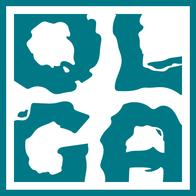OLGA Newsletter no. 1, May 2021
Have a nice spring time!
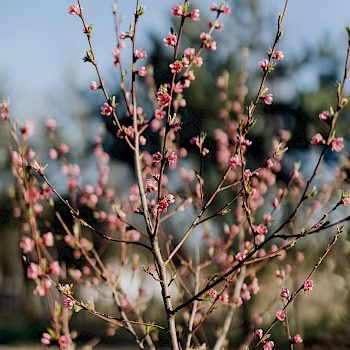
Just in time for the start of the warm months and the first easing of the Corona situation, the first OLGA newsletter is published. With this publication, we would like to keep you informed twice a year about our activities in the field of research, citizen participation and networking in the project, as well as about other events, initiatives and publications on project-related topics. Experience shows that many processes get underway in the first year of the project. Under Corona protection measures, this often does not go as desired, but some online exchange has also brought us to interesting insights in the network and beyond.
In this issue:
- Targeting: Regional value creation and sustainable land use in the Dresden project region
- Measurement campaign launched: Investigations in and on agroforestry plantations along watercourses
- Criteria defined: Potential areas for agricultural wood plantations in Dresden and the surrounding area
- Bought and eaten regionally: The really good stuff grows so close!
- Online exchange with gastronomy and natural food trade
- Citizen Science survey planned: How regional are retail and gastronomy in the Dresden region?
- Events and calls for tender
Enjoy reading!
the OLGA project team
1. Targeting: Regional value creation and sustainable land use in the Dresden project region
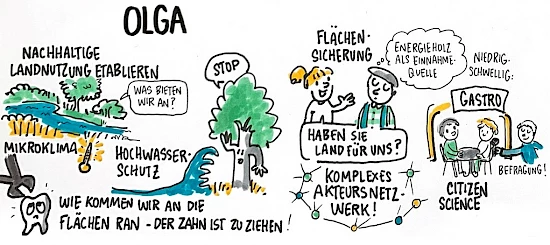
The project, funded by the Federal Ministry of Education and Research (BMBF) as part of the Stadt-Land-Plus Programme, supports the realisation of diversified land use concepts along watercourses and on agricultural land and optimises regional value-added cycles in the agriculture and food industry for the project region of Dresden.
The focus of land use is on agricultural wood structures along watercourses and the services they can provide for this sensitive ecosystem and the surrounding cultural landscape, e.g. shading, protection against drying out, flooding, substance inputs and erosion, and - very importantly - the promotion of biodiversity. How do agricultural wood structures have to be planted in order to provide these ecosystem services but still remain economically interesting as an agricultural product and energy resource?
The OLGA project supports the establishment of urban-rural cooperations to implement diversified farming methods and optimise regional value-added cycles of both food and wood biomass. What joint cooperation structures and financing models are needed to ensure that the regional agriculture and food industry remains capable of acting and adding value in the long term?
Until the beginning of 2023, the OLGA project partners will not only be conducting research on the computer, but also on two pilot areas in the Dresden region and in close exchange with regional actors and the population in the city and the countryside. They want to find out what concrete needs, potentials and challenges exist in the region with regard to sustainable and differentiated land management with agricultural wood and with regard to the cultivation, processing and marketing of regional food in the urban-rural context.
The regional population is actively involved in the research process within the framework of Citizen Science actions and can conduct their own investigations into the regionalisation of the food economy and the promotion of biodiversity and landscape aesthetics through agricultural wood structures. In this way, public awareness and appreciation of regional products and biodiversity in our landscapes can be raised.
2. Measurement campaign launched: Investigations in and on agroforestry plantations along watercourses
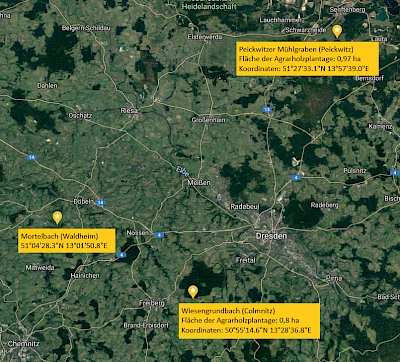
© TU Dresden/IfW, Manuel Wewer
What services can agricultural wood structures provide along watercourses? Especially during hot dry periods, the ecosystems of small streams suffer enormously. The water level decreases or they often even dry out completely, so that the living conditions in and around the watercourse can change significantly in a short time.
In addition to naturally grown riparian woody plants, agricultural woody structures can contribute to shading the watercourse and thus cooling it down. The fall of leaves in autumn can also serve as a food source for microorganisms living in the water body. Plants act against erosion and can reduce pollutant inputs from agriculture into the watercourse. Woody agricultural plantations along watercourses can also contribute to flood protection, as the trees have a retention effect due to their flow resistance and thus slow down flood waves.
So what exactly must these agricultural wood structures be like, i.e. which tree species should be used and how should they be planted so that they have a positive effect on the climate in and around the watercourse, on the soil and on biodiversity? The TU Dresden's science partners have launched a comprehensive measurement campaign at three sites in the Dresden region to answer this question.
Climate and woody plant parameters are the focus of the investigations
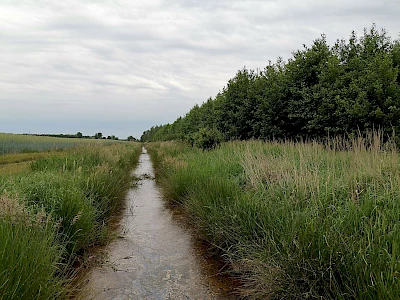
The agricultural wood plantation at Peickwitzer Mühlgraben near Senftenberg is used to collect information on the physiological processes in the individual woody plants and on the rooting of the soil. The analyses are carried out by the Molecular Physiology of Woody Plants working group of the Chair of Forest Botany of the TU Dresden. Here, climatic parameters such as air temperature and humidity, precipitation, soil water content and radiant heat will be measured continuously throughout the year 2021. On the woody plants themselves, the temporal change in the trunk circumference of the trees and the leaf areas will be documented, and the leaf shoots and leaf fall will be observed.
Another agricultural wood structure included in the investigations is located at the Wiesengrundbach in Klingenberg-Colmnitz near the Tharandt Forest. Here, the surveys are in the area of flowing waters, as well as at another site at a renaturalised watercourse section of the Mortelbach near Waldheim (LK Mittelsachsen). The Chair of Hydraulic Engineering collects information on the hydraulics of watercourses, the microclimate of watercourses and the macrozoobenthos (benthic invertebrate fauna) and investigates the correlation between these parameters.
In addition to the woody plant physiological, climatic and hydraulic measurements, the Chair of
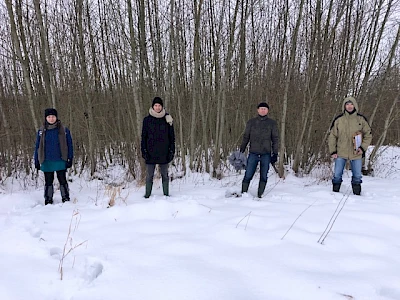
Biodiversity and Nature Conservation is supplementing the investigations with analyses of the woody plant structure and, the position of the trees and the flowing water in the space using high-resolution, terrestrial 3D laser scanning. Based on the laser scanning data, a digital terrain model of the study areas is created. Furthermore, the soil composition and the vegetation composition in the plantation itself and in the surrounding agricultural areas will be investigated and the diaspora bank analysed on the basis of soil samples.
The TU Dresden's measurement campaign will run this year and next. It is intended to provide information on the multifunctional and biodiverse implementation of an agricultural wood structure.
3. Criteria defined: Potential areas for agricultural wood plantations in Dresden and the surrounding area
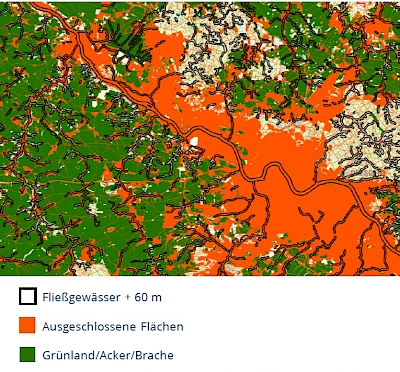
Staff members of the Chair of Biodiversity and Nature Conservation at the TU Dresden supervised a student project work within the OLGA project as part of the Master's degree course in Spatial Development and Natural Resource Management, which is carried out in cooperation between the TU Dresden and the Leibniz Institute for Ecological Spatial Development. As part of the work, the area potential for planting agricultural trees in Dresden and the surrounding districts was analysed. In addition to the energetic utilisation of the fast-growing wood, the ecological condition of flowing waters is to be improved in accordance with the EU Water Framework Directive.
A catalogue of criteria regulating requirements, exclusion areas and legal framework conditions for potential areas of agricultural timber planting served as a starting point:
- Current land use: arable land, grassland, fallow land
- Distance to water bodies: 60 m surrounding
- Distance to settlement and traffic areas: 8 m
- Exclusion: Area natural monuments, core zones of national park and biosphere reserve, legally protected biotopes, floodplains
- Slope: max. 20 %
- Area size: 2-20 ha per agroaric wood plantation
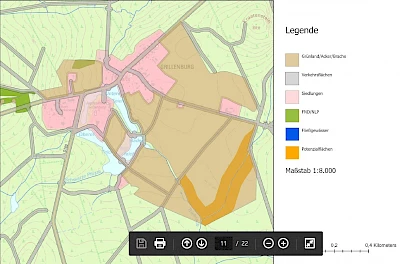
Using data sources from the Saxon State Office for Environment, Agriculture and Geology and the Saxon State Office for Geographic Information and Surveying, the potential areas were determined with the help of the geographic information system ArcGIS Pro.
After the analysis had been carried out, 2,480 areas were considered for the establishment of agroforests, which lie within a radius of 40 km around the city limits of Dresden and fall within the specified area size of 2-20 ha per agroforestry plantation. These have a total area size of 8,951 ha, which corresponds to a share of grassland, arable land and fallow land of 7 %. Most of the potential areas are rather small and reach the minimum size of 2 ha. The average size of all potential areas is 3.6 ha, with the largest area being 17.2 ha. Areas larger than 20 ha are also potentially suitable for planting several agroforestry plantations, the size of each not exceeding 20 ha.
The results of the work provide an initial assessment of possible land uses with agricultural wood in the Dresden region. The catalogue of criteria will be further specified in the further course of the project in order to finally determine the land potential and feasible areas for implementation.
Marie Herzig and Lena Schwarz
Contact: Michaela Hildebrand, TU Dresden, Prof. for Biodiversity and Nature Conservation | E-Mail
4. Bought and eaten regionally: The really good stuff grows so close!
Online exchange with gastronomy and natural food trade
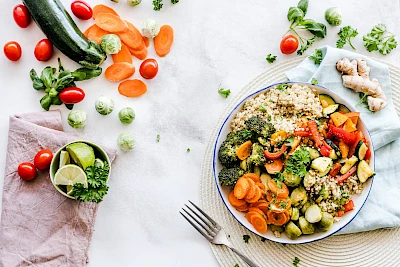
At the beginning of the year, the Umweltzentrum Dresden invited to a digital exchange on the topic of regionality in gastronomy. Gastronomers from the project region Dresden, natural food wholesalers and other actors from different projects and marketing initiatives took a look at the structure of the existing regional economic relations between gastronomers and producers.
At the beginning, three short presentations provided impulses for discussion: Robin Ehrhardt from the Bavarian Competence Centre for Nutrition (KErn) presented the gastronomy platform Wirt sucht Bauer and Philipp Kögler spoke about the initial successes with the digital marketplace lefoodie for regional producers and restaurateurs in the Leipzig region. In addition to the two marketing platforms, Stefan Mansfeld from the Saxon State Office for Agriculture and Geology presented the consumer portal regionales.sachsen.de. The event was moderated by Julia Leuterer from the Lokale Agenda Dresden.
After the keynote speeches, there was a lively discussion: The willingness to pay for regional products can be very high among guests as end customers. The prerequisite for this, however, is convincing 'storytelling', the telling of an authentic story about the producer and the origin of the products at close quarters. The need for a regional marketing platform is definitely there, but the challenges are logistics, a sufficient product range and quantities that meet demand. Personal contact between producers and restaurateurs should not be underestimated as the basis for a good business relationship. In the usually stressful everyday business with few time resources, an order must also be completed with just a few clicks.
After the event, there was a high demand on the part of the gastronomy for contacts to producers and for the further development of regional sources of supply. These and other topics in the area of regional added value will be addressed by the OLGA project in the upcoming months.
Citizen Science survey planned: How regional are retail and gastronomy in the Dresden region?
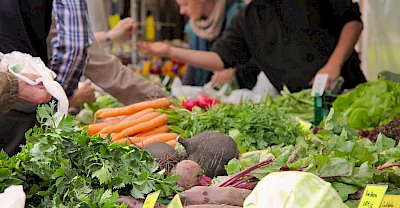
When shopping, many people make sure that the eggs are from the region, the vegetables at least come from Germany, or wait in spring until the strawberries are no longer from Spain but from the surrounding area. But what about the bread from your favourite baker? He may bake locally, but where do all the ingredients of his bread actually come from? Or at lunch with the colleagues: Are the vegetables on the plate from the freezer or fresh from the local producer? At the butcher's it is often even more complicated. There is a sign saying 'regional': does that mean that the slaughtering was done in the region, that the animals were raised and born there, or that the feed was produced regionally? According to the consumer and market study "Wie regional is(s)t Sachsen?" (How regional is/eats Saxony?), regionality is an important criterion for many producers when shopping, but identifying regional products is often not that easy. The OLGA project therefore invites citizens to ask about the origin of foodstuffs when shopping in butcher's shops and bakeries and when visiting restaurants, and to record these answers in a digital questionnaire. The aims of the survey are
- to answer the question: How high is the share of regional food/products in restaurants, bakeries and butcher's shops in Dresden and the region?
- to encourage the participating citizens to pay attention to regional origin when visiting a restaurant, butcher's shop or bakery.
The aim is to increase the focus on regionality in (retail) trade. The campaign is part of the Citizen Science movement, in which citizens actively participate in research processes.
The start of the survey "How regional was your shopping?" will take place as soon as the Corona regulations allow for an opening of the gastronomy and will be announced via the OLGA website and social media channels.
Contact: Veronica Schmidt-Cotta, Umweltzentrum Dresden | E-Mail
5. Events and calls for tender
31.05.-02.06.2021: 35. Naturschutztag, online | more
28.-29.06.2021: Dresdner Flächennutzungssymposium, hybrid | more
01.-02.07.2021: ARL-Kongress 2021: Im Zeichen der Pandemie – Raumentwicklung zwischen Unsicherheit und Resilienz, online | more
17.07.2021: UFER Kitchen Talk @Koko/Alte Gärtnerei: Cash Cow - Regionale Finanzierungmodelle, Dresden | more
02.08.2021: Einreichfrist Beiträge „Bio-Regio Modellregionen Sachsen“ | more
31.08.2021: Einreichfrist Ideenwettbewerb „Modellbetriebe Bioökonomie“ | more
02.09.2021: 2. Zukunftswerkstatt des Projektes WertVoll, Leipzig | more
09.09.2021: EDIC Dresden „Europa am Morgen“ – Der Europäische Grüne Deal als Schlüssel für eine regionale und biodiverse Land- und Ernährungswirtschaft - Anspruch und Wirklichkeit, online | more
20.-22.09.2021: Landscape 2021 – Diversity for Sustainable and Resilient Agriculture, online | more
22.-24.09.2021: IÖR-Jahrestagung Raum & Transformation, Dresden | more
23.09.2021: UFER Kitchen Talk @Koko/Alte Gärtnerei: From farm to fork - Regionale Gastronomie, Dresden | more
29.-30.09.2021: 8. Forum Agroforstsysteme, Bernburg/Saale | more
Imprint
This newsletter is published by the City of Dresden as the responsible partner for public relations in the OLGA project, which is funded by the Federal Ministry of Education and Research as part of the Stadt-Land-Plus programme.
City of Dresden
Mayor's Office
Dr.-Külz-Ring 19
01067 Dresden
Editor: Anke Hahn | Contact
With contributions by Marie Herzig, Michaela Hildebrand, Prof. Doris Krabel, Veronica Schmidt-Cotta, Lena Schwarz, Alexander Solger, Manuel Wewer
If you have not yet subscribed to the newsletter, you can do so HERE.
If you no longer wish to receive the newsletter, you can unsubscribe HERE at any time!
Imprint
This newsletter is published by the City of Dresden as the responsible partner for public relations in the OLGA project, which is funded by the Federal Ministry of Education and Research as part of the Stadt-Land-Plus programme.
City of Dresden
Mayor's Office
Dr.-Külz-Ring 19
01067 Dresden
Editor: Anke Hahn | Contact
With contributions by Marie Herzig, Michaela Hildebrand, Prof. Doris Krabel, Veronica Schmidt-Cotta, Lena Schwarz, Alexander Solger, Manuel Wewer
If you have not yet subscribed to the newsletter, you can do so HERE.
If you no longer wish to receive the newsletter, you can unsubscribe HERE at any time!
